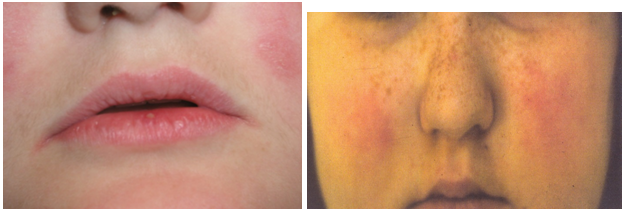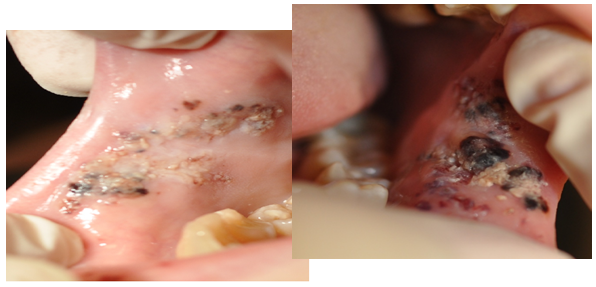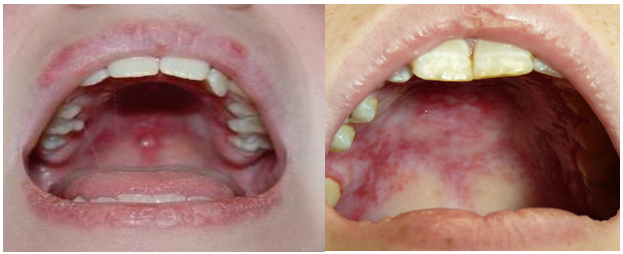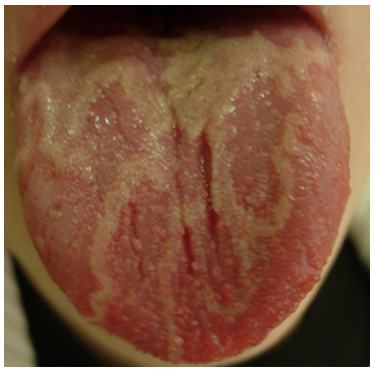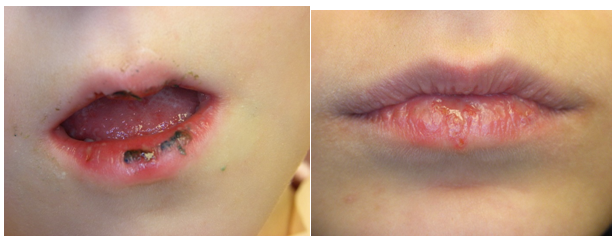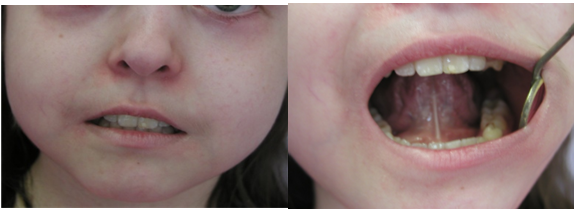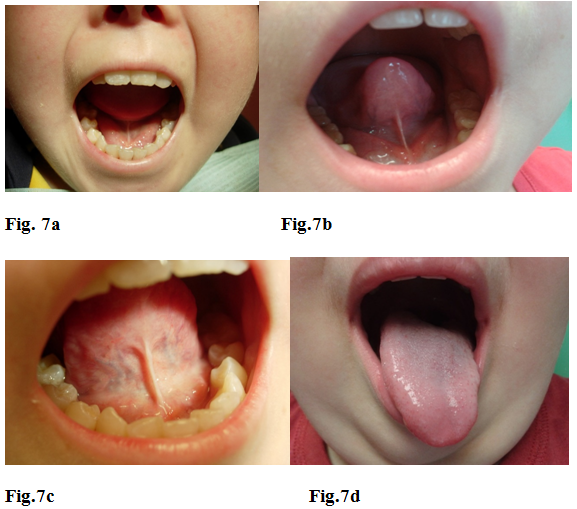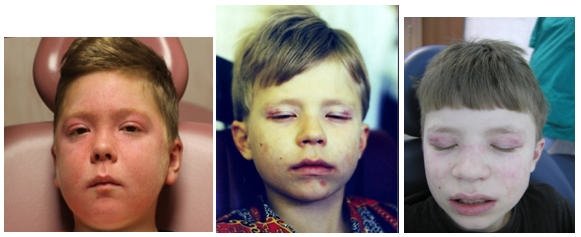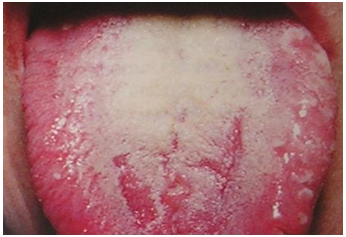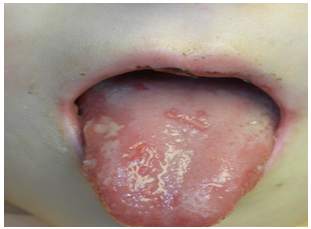СЛИЗИСТАЯ ОБОЛОЧКА ПОЛОСТИ РТА У ДЕТЕЙ С РЕВМАТИЧЕСКИМИ ЗАБОЛЕВАНИЯМИ
Скакодуб А.А.
Кандидат медицинских наук, доцент, кафедра стоматологии детского возраста и ортодонтии, Первый московский государственный медицинский университет им. И.М. Сеченова
СЛИЗИСТАЯ ОБОЛОЧКА ПОЛОСТИ РТА У ДЕТЕЙ С РЕВМАТИЧЕСКИМИ ЗАБОЛЕВАНИЯМИ
Аннотация
Целью нашего исследования явилось повышение уровня диагностики и лечения патологии слизистой оболочки полости рта у детей с ревматическими заболеваниями. Основными задачами нашего исследования явилось: выявить все виды патологических изменений слизистой полости рта у детей с данной патологией; на основании клинических, морфологических и иммуно-гистохимических исследований слизистой оболочки полости рта – определить основные диагностические признаки каждой нозоологии; а так же установить зависимость между длительностью течения основного заболевания, применяемой базисной терапией и патологией слизистой оболочки полости рта у детей с ревматическими заболеваниями. Мы надеемся, что наши исследования помогут в диагностике основных признаков каждой нозоологической формы ревматических заболеваний у детей и выбрать правильную тактику лечения патологии слизистой, что способствует уменьшению присоединения вторичной инфекции и осложнений течения основного заболевания у детей.
Ключевые слова: патология слизистой оболочки у детей с ревматическими заболеваниями, системная красная волчанка, системная склеродермия, дерматомиозит, ревматоидный артрит.
Skakodub A.A.
Academic adviser – MD, Associate Professor, Chair of Pediatric Dentistry and Orthodontics, I.M. Sechenov First Moscow State Medical University
ORAL MUCOSA IN CHILDREN WITH RHEUMATIC DISEASES
Abstract
The purpose of our research is to raise the level of diagnostics and treatment of mouth cavity`s mucous membrane pathology of children with rheumatismal diseases. The main aims of our research are to educe all the sorts of pathological changements of mouth cavity`s mucosa of children with this pathology; based on clinical, morphologic and immunohistochemical researches of mouth cavity`s mucous membrane to define basic diagnostic characteristics of each nosology; also to determine the dependence between the time duration of the main disease applied by baseline therapy and by mouth cavity`s mucous membrane pathology of children with rheumatismal diseases. We hope that our researches will help in diagnostics of main characteristics of each nosological form of children`s rheumatismal diseases and to choose the right tactics in mucosa`s treatment that will favor to the decrease of postprimary infection joining and complications of the children`s main course disease.
Keywords: mouth cavity`s mucous membrane pathology of children with rheumatismal diseases, systemic lupus erythematosus, systemic scleroderma, dermatomyositis, rheumatoid arthritis
Modern Rheumatology combines a number of diseases in a group of systemic connective tissue diseases, which are characterized not only the morphological changes of the last, but to some extent impaired immune processes (Geppe N.A., Liskina G.A., 2011); particularly significant for these violations of autoimmune and immune-complex diseases in which they constitute the core mechanism of pathogenesis. In clinical practice, the most frequent 4 groups of systemic connective tissue diseases are: rheumatism, diffuse disease (systemic lupus erythematosus and systemic scleroderma, dermatomyositis, etc.), systemic vasculitis and rheumatoid arthritis (Nasonova V.A. 2008). These chronic diseases are often characterized by severe course, the defeat of all organs and systems and lead to disability of patients.
Many years of experience in providing dental care to these children (Skakodub AA 2000) suggests that the diagnosis and treatment of lesions of the oral mucosa (OM) of these children leads dentists, pediators, rheumatologists to a standstill because there is no literature which clearly describes the main diagnostic features of OM lesions characteristic of each nosological form rheumatic diseases in children. In this regard, the goal was set - to identify the main diagnostic features of lesions of the oral mucosa for each nosological form and identify the manifestations of secondary infection in the mouth, caused by prolonged intake or immunosuppressive glucocorticosteroid therapy of children with rheumatic diseases.
Under our observation were 246 children aged 3 to 17 years with rheumatic diseases who are on continuous treatment and dispensary observation of children's diseases in the clinic of the Moscow Medical Academy. Moscow Medical Academy, one with systemic lupus erythematosus (SLE) 115 children with rheumatoid arthritis (RA) 105, with dermatomyositis (DM), 20 with systemic scleroderma (SSD), 36 children.
As a result, our study showed that oral mucosa is affected in 100% of all forms of rheumatic diseases and has a number of nosologic features.
Observed in 100% destruction of the oral mucosa in children with SLE, since she was involved in a common pathological process and is manifested in the form of a sharp diffuse hyperemia and edema with severe major vascular pattern, against which there were erosion, and ulceration of the aphthae. Skin lesions in SLE nose and cheek contours resembles the "butterfly" - are isolated or confluent erythematous patches of different sizes and shapes. This is the most frequent and often early symptoms, only 10-15% of them are missing (Fig. 1).
Fig. 1 - Systemic lupus erythematosus (SLE)
In children with acute course of SLE appear severe ulcerative-necrotic stomatitis, combined with superficial skin necrosis in the ears, forehead, nose wings, cheeks, lips (Fig. 2).
Fig. 2 - Systemic lupus erythematosus. Ulcerative-necrotic stomatitis.
On the mucous membrane, there are always hemorrhagic spots (submucosal hemorrhage). Peculiar lesion is localized in the region of the sky - Lupus enanthema with erythematous, edematous, and sharply defined boundaries (Fig. 3).
Fig. 3 - Systemic lupus erythematosus. Lupus enanthema.
Tongue changes occur to the type of lupus-desquamative glossitis, also witnessed a sharp congestion by smoothing and atrophy of the papillae and severe edema (Fig. 4).
Fig.4 - Systemic lupus erythematosus. Lupus-desquamative glossitis.
In patients with long duration of more than 2 years have seen persistent redness with disseminated vascular pattern and the elements of destruction in the form of hemorrhagic spots, erosions, AFL, atrophic scarring and hyperkeratosis lesions - areas of turbidity mucosa with maceration of the epithelium, as rising and not rising above the mucosa. Foci of hyperkeratosis remain in remission, and an exacerbation of underlying disease, they identified with hyperemic rim at the periphery, especially in the mucosa of lips - Lupus cheilitis (Fig. 5).
Fig. 5 - Systemic lupus erythematosus. Lupus cheilitis.
If the duration of the underlying disease before 2 years of changes in the mucous membrane are unstable in nature, more than 2 years - defeat have persistent irreversible, as a consequence of common degenerative changes expressed vasculitis in SLE patients, as evidenced by morphological studies.
Histological examination of gingival tissue in children with SLE revealed degeneration of the epithelium and infiltration of lymphocytes. Revealed vasculopathy and vasculitis, in the vessel walls with immunohistochemical study revealed deposits of C3 component of complement and immune complexes IgM and IgG.
Morphological studies have revealed a sharp increase in cell density of infiltration, including cell infiltration increased number of lymphocytes, plasma cells, fibroblasts and fibrocytes, eosinophils and neutrophils and the number of cells producing IgM; the number of IgG increases slightly.
When systemic scleroderma (SSD) have all observed children mucosa was involved in a common pathological process, and endure, like leather, three-stage development of the underlying disease (solid edema, induration, atrophy) (Fig. 6).
Fig. 6 - Systemic scleroderma.
At the beginning of the disease observed changes of the oral mucosa: edema, mild hyperemia with a pronounced vascular pattern with more ductility preserved, sometimes there are elements of destruction, erosions, aphthae. Further, for the duration of the disease more than 2 years, there has been a dense phase of edema of the mucous membrane, which gradually transforms into a stage of induration, in which mucosal swelling and anemic. In the atrophic stage, typical brown pigmentation, mucosal dramatically thinned, dry and lose elasticity.
Changes on the surface of the tongue in long-term illness before 2 years of age occur in the type of desquamation of the epithelium, and fringed with pale is not very dense whitish rim, with a slow migration to the background sclerosal dry. At stage 3 the activity of the underlying disease is more common in atrophic glossitis.
If the duration of the disease over 2 years of pathological changes on the tongue are irreversible. At the same time afects mucosa, and tongue muscle itself; sublingual frenulum is especially sensitive to the process of sclerosis, which leads to mikroglossitis, limited mobility of tongue (Fig. 7a,b,c,d).
Fig. 7 - Systemic scleroderma. a) mikrostoma, b) mikroglossitis, c) limited mobility of tongue, d) atrophic of tongue
All the processes are irreversible sclerosis of the mucous membrane and lead to intense suffering of patients due to limited mobility of tongue, soft palate, decreasing the depth of the vestibule of the mouth, speech disturbances, changes in taste sensations, and the thinning of the mucous and light her traumatic (mikroglossitis).
Histological studies of the gingival tissue in SSc in children reveal epithelial dystrophy, epithelial infiltration by lymphocytes occurs much less frequently than in SLE. Only children with SSc revealed a reduction of the vascular bed. Vasculitis are found in 1 / 3 of cases, vasculopathy in 1 / 2, in their own plate increases cell density of infiltration. Among cell infiltration increased number of lymphocytes, plasma cells, fibroblasts and fibrocytes, neutrophils, cells producing IgM and IgG, slightly increases the number of IgE-cells. In 72.7% indicated the deposition of the C3 component of complement and immune complexes of IgM and IgG in the vessel walls.
When the DM at the beginning there is a bright edematous erythema, acquiring then purple shade and covering paraorbital region, which has been in world literature as "dermatomiozitis” points (Fig. 8).
Fig. 8 - Dermatomiozit (DM). Edematous erythema paraorbital region.
All the children with DM mucosa is also involved in a common pathological process and it is characterized by diffusion, a bright crimson color of oral mucosa with marked fine vascular pattern, and edema. On the background of redness appear to erosion, and ulceration of the aphthae. There are multiple submucosal hemorrhages (hemorrhagic spot). There are persistent irreversible changes in the mucosa in the form of scar atrophy, a dramatic thinning, foci of hyperkeratosis.
Mucous tongue is changing from desquamation of the epithelium to the characteristic of increasing atrophy of papillae tongue (Fig. 9).
Fig. 9 - Dermatomiozit (DM). Desquamation glossitis.
In children with acute course of the underlying disease with severe vasculitic and common degenerative changes observed necrotizing ulcerative stomatitis, followed by coarse cicatricial deformities of oral tissues.
Histological examination of gingival tissue in children with DM revealed degeneration of the epithelium is much less common than in SLE, 1 / 3 of cases. Infiltration of the epithelium by lymphocytes also less common than in SLE (2 / 3 of cases). Vasculitis are found in 2 / 3 of cases, significantly less than in SLE.
Morphological studies with DM exhibit increasing infiltration into its own plate. Increased number of lymphocytes among the cells infiltrate, plasma cells and fibroblasts, neutrophils. Increases the number of cells producing IgM, the number of cells producing IgE, is not increased. In 2 / 3 of the cases observed the deposition of the C3 component of compliment and immune complexes of IgM and IgG in the vessel walls.
In the pathological process in rheumatoid arthritis was involved oral mucosa of all children, lesions associated with the development of inflammatory and degenerative processes, swelling and redness of the mucous membrane was stagnant in the remission of the underlying disease, the acute stage of rheumatoid arthritis she took a red-cherry color. Mucosa as a "barometer" and clearly reflects the gravity of the rapidly progressive course of the underlying disease.
Expressed a clear mucosal vascular pattern is clearly seen in patients with articular-visceral form and prolonged (lasting more than 5 years) over the articular form of rheumatoid arthritis. The involvement of the venous plexus in the pathological process manifested by congestive hyperemia, an exacerbation of the process of receiving the cherry-purple hue. Clear vascular pattern was more pronounced on the inner (labial) surface of the lips, often to the mucosa of the lower lip and gum.
Vasculitis on the oral mucosa gave a peculiar clinical picture in 1 / 3 of patients: through a transparent, easily separated from the mucosa of the film shone point or individual thickened areas of hemorrhage, petechiae with defined boundaries.
Among the characteristic manifestations in the oral mucosa of patients with rheumatoid arthritis should include facts, the occurrence and clinical course are consistent with chronic recurrent aphthous stomatitis (Fig. 10). The appearance of aphthae coincided with the exacerbation of rheumatoid arthritis, which often took place in the autumn and spring seasons.
Fig. 10 - Rheumatoid arthritis. Chronic recurrent aphthous stomatitis.
The defeat of tongue proceeds on the type of the migrating forms of desquamative glossitis. Localization of sites desquamation of the epithelium lining was different: the dorsal, lateral and bottom surface of the tongue. The process of actively traced patients in acute rheumatoid arthritis.
Morphologic study indicated proliferation and swelling of the endo- and peritelial cells, thickening of vessel walls, narrowing of the lumen - productive vasculitis. In the epithelium revealed degenerative processes, the phenomenon of para- and hyperkeratosis, areas of necrosis and ulcers, sclerotic changes in the submucosal layer, vacuolar degeneration of muscle fibers.
In all the cases studied revealed perivascular limfogistiotsitic infiltrates with the presence of plasma cells and a decrease in the number of mast cells in the infiltrates, the phenomenon of degranulation.
With a low activity of the process, a chronic disease course and, more importantly, long-term treatment with glucocorticoids in the vessel walls was noted the predominance of sclerotic processes. Changes in the epithelium and connective tissue layers of the mucous membrane gums are, apparently, of a secondary nature and are caused by primary changes in microvasculature. Some observations marked sclerosis mesh layer, epithelial changes were in the development of atrophy, acanthosis, and degeneration of cells. In two patients, and amyloid deposits were found in the mass of the vessel walls.
Thus, after treatment corticosteroids, immunosuppressive drugs, as well as a change of tactics of treatment of the underlying disease in children with rheumatic diseases was observed fungal adherence and viral infections in the form of oral candidiasis (Fig. 11) and herpetic stomatitis (Fig. 12).
Fig. 11 - Oral candidiasis.
Fig. 12 - Herpetic stomatitis.
This is confirmed by optical studies of viral and detect the presence of viral antigens Epstein-Barr virus in the MICs for 22% of children, with cytomegalovirus antigen - 38%, antigen of herpes simplex virus type 1 - 42%.
We hope that our researches will help in diagnostics of main characteristics of each nosological form of children`s rheumatismal diseases and to choose the right tactics in mucosa`s treatment that will favor to the decrease of postprimary infection joining and complications of the children`s main course disease.
Литература
- Лыскина Г.А. Системный васкулит у детей. Клиника, диагностика, лечение. / Автореф. дисс. докт. мед. наук. Москва. 1994 г.
- Ревматология: Национальное руководство // Под редакцией Насонова Е.Л, Насоновой В.А. – М.:ГЭОТАР-Медиа, 2008. – С. 25.
- Руководство по детской ревматологии. // Под редакцией Геппе Н.А., Подчерняевой Н.С., Лыскиной Г.А. – М.:ГЭОТАР-Медиа, 2011. – С. 13-22.
- Скакодуб А.А. Состояние органов полости рта у детей с дифузными болезнями соединительной ткани // Автореф. дисс. канд. мед. наук. Москва. 2000 г.
References
- Lyskina G.A. Sistemnyj vaskulit u detej. Klinika, diagnostika, lechenie. / Avtoref. diss. dokt. med. nauk. Moskva. 1994 g.
- Revmatologija: Nacional'noe rukovodstvo // Pod redakciej Nasonova E.L, Nasonovoj V.A. – M.:GJeOTAR-Media, 2008. – S. 25.
- Rukovodstvo po detskoj revmatologii. // Pod redakciej Geppe N.A., Podchernjaevoj N.S., Lyskinoj G.A. – M.:GJeOTAR-Media, 2011. – S. 13-22.
- Skakodub A.A. Sostojanie organov polosti rta u detej s difuznymi boleznjami soedinitel'noj tkani // Avtoref. diss. kand. med. nauk. 2000 g.

